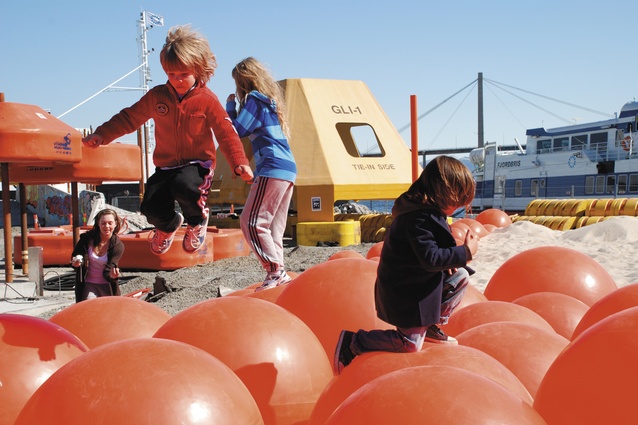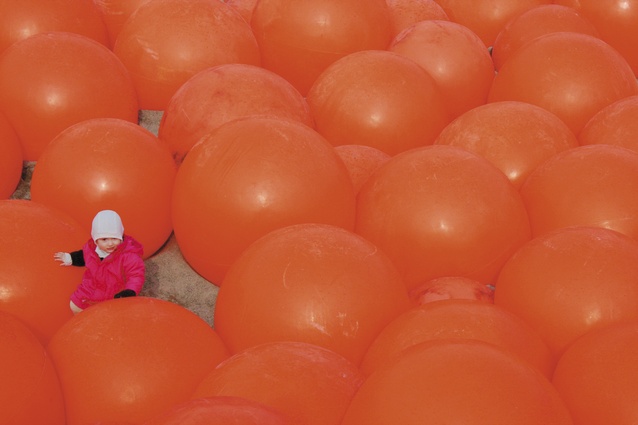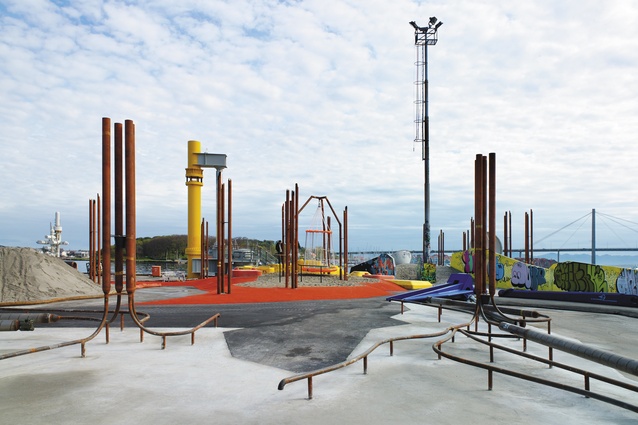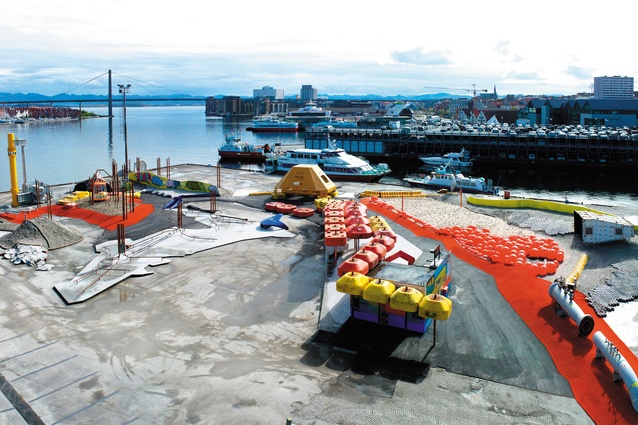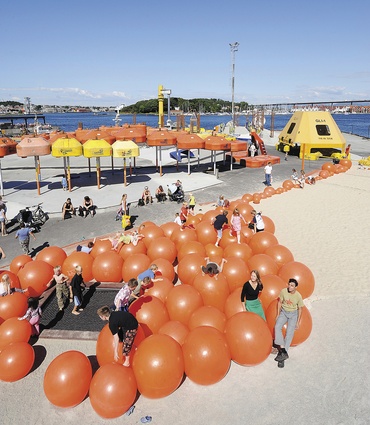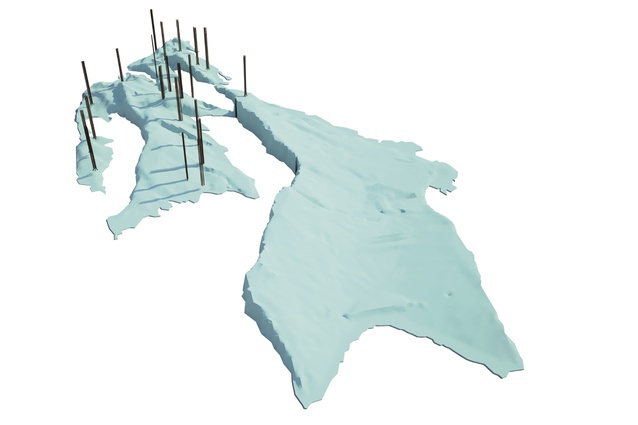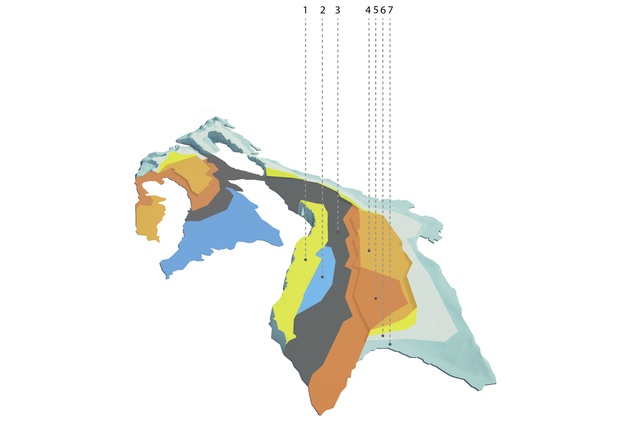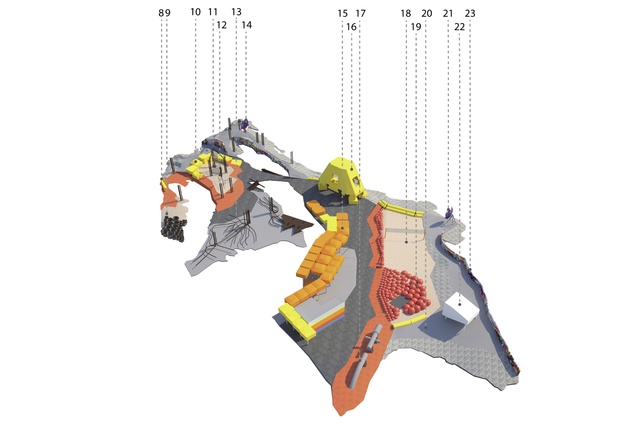Recycled fun
Oil and gas might seem like a strange thing to reflect in a playscape, but that’s exactly what Helen & Hard looked to represent with this inventive landscape design.
Here at Landscape Architecture New Zealand, we’re always interested in seeing projects that express a carefully considered design approach – such as this playful urban space, Geopark, located in Stavenger, the base for Norway’s oil industry. Technology related to that industry has seen the city become a knowledge hub, attracting specialists from around the world. On this playscape project, initially intended as a temporary installation, design firm Helen & Hard sought to “synergise the expertise and material resources of the offshore industry with sustainable urban development”.
Geopark is on Stavenger’s waterfront, and utilises a vacant forecourt adjacent to the Oil Museum. In developing the concept, the designers drew from three different local resources for the programming: the geological and seismic expertise of the oil industry; technology, materials and waste related to oil production; and the ideas of local youth groups.
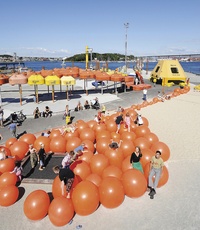
An initial intention was to give a tangible experience of the oil and gas reservoir Troll, which is hidden 2000-3000m below the seabed. The designers explain that it is “by far the most valuable field on Norwegian shelf”.
“The topography of the park is based on the geological layers, the ‘strata’, of the Troll field, reconstructed in a scale of 1:500. This ‘geo-landscape’ was developed in an experimental sequence. The first phase was a digital manoeuvre, where the 15 geological layers were partly peeled away and exposed, creating a park sloping towards both the sun and the centre of the square. The second phase consisted of workshops with youth groups. Here, the functions of the sedimentary layers were programmed for activities such as biking, climbing, exhibition, concerts, jumping, ball play and chilling-out. The layer containing the oil, including its drilling wells, became a skate park, while geological folds were used as exhibition walls for graffiti and street art.”
In the third phase, the designers say the surfaces and installations were created using recycled and reshaped elements from petroleum installations, the abandoned Frigg oil platform, offshore bases, equipment suppliers and scrap heaps. “The park is used by kids, parents and youths at all hours, turning the formerly abandoned site into a humming social meeting point.”
KEY B & C:01: Anchor buoys. 02: Concrete. 03: Asphalt. 04: Sand. 05: Artificial turf and fenders. 06: Gravel. 07: Protective mats. 08: From pipe to pipe. 09: Protective mats. 10: Ancher bouy arena. 11: Personnel transfer basket. 12: Gymnastics on well paths. 13: Skateboarding on path/anchors. 14: Sun trap. 15: Roof of mooring bouys. 16: Refreshments/exhibition in the plate cover. 17: Pig launcher and pipeline. 18: Beach volleyball court. 19: Jumping landscape with fenders and trampoline. 20: Troll trail. 21: Whisper dish. 22: Film in ventilator hood. 23: Graffiti art on fault plane.

